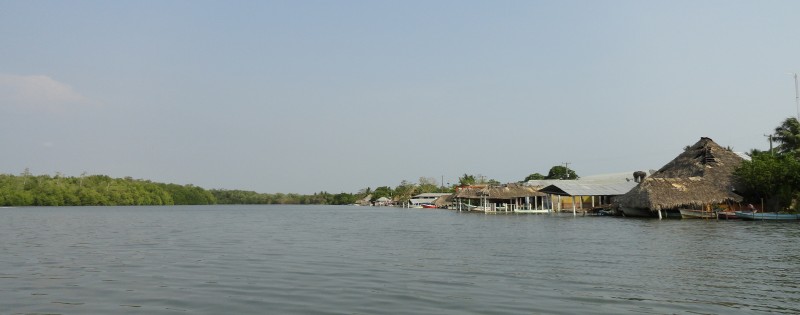
Barra de Zacapulco, Chiapas, México
August 21, 2014|Posted in: Beach, Nature
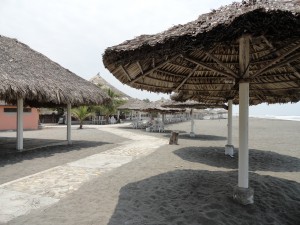 Having returned to Comitán de Dominguez and civilization, spent some time at the Hotel Renacimiento, and washed our laundry by hand on said hotel’s roof following our trek out to and back from Laguna Miramar, we pointed ourselves in the direction of Chiapas’ coast and the Pacific Ocean. Our first beach stop on this trip: Barra de Zacapulco.
Having returned to Comitán de Dominguez and civilization, spent some time at the Hotel Renacimiento, and washed our laundry by hand on said hotel’s roof following our trek out to and back from Laguna Miramar, we pointed ourselves in the direction of Chiapas’ coast and the Pacific Ocean. Our first beach stop on this trip: Barra de Zacapulco.
We chose Barra de Zacapulco because it sounded more interesting than your typical beach spot. It is necessary to take a lancha (motorized speedboat) through mangrove forests to get there, the location is home to turtle conservation efforts in season, there’s camping, and so on. With breakfast in our bellies, we got underway.
Getting there was a bit confusing by car once we turned off the highway, but we eventually found our way to the Embarcadero las Garzas (Herons Embarcadero), our departure point for Barra de Zacapulco. View the OpenStreetMap (OSM) rendering of the area here (once there you can click on or simply hover over “Embarcadero las Garzas” on the left side of the window) and compare with the Google Maps (GM) rendering here. As you can see, there is a town that goes either by the name of Acacoyagua (in the OSM rendering) or Acacoyahua (in the GM rendering) from which you depart Highway 200 for the coast. We believe we turned off Highway 200 too early as we were heading northwest and our GPS was not working too well. You can also take collectivos and taxis to get to the embarcadero. In that case, you may need to go through Escuintla instead (see maps – Escuintla is southeast of previously mentioned Acacoyagua).
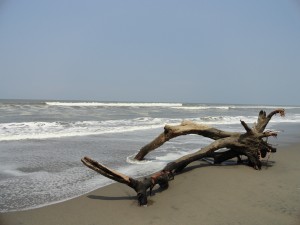 The embarcadero has a blue collar feel to it – it’s where people tally, sell, and transfer their catch (fishing is the main industry there, besides tourism). We paid $30 MXN to park the car with the operator of one of the lancha colectivos. The parking area was covered and there were other vehicles parked as well. He said something to the effect that it was his property and, sure enough, there was a house off to the side. The car was fine after one night, no problems at all.
The embarcadero has a blue collar feel to it – it’s where people tally, sell, and transfer their catch (fishing is the main industry there, besides tourism). We paid $30 MXN to park the car with the operator of one of the lancha colectivos. The parking area was covered and there were other vehicles parked as well. He said something to the effect that it was his property and, sure enough, there was a house off to the side. The car was fine after one night, no problems at all.
Lancha colectivos ran us $90 per person for a roundtrip ride to Barra de Zacapulco. We paid upfront and were told to keep our receipt for the return trip. All going prices are posted on a big sign under the arcade next to the lanchas. Note that you can take tours of the mangroves if you so desire, which should include the viewing of wildlife such as larger birds and crocodiles. In that case, it’s cheaper to do such a tour in a larger group so you can all share the cost as you’re not charged per person for those tours.
The approximately 25 minute ride through the mangroves and then over more open water is a blast and the lancha gets up to a decent speed once you get into more open water. While the boat flies, it’s still a very smooth ride. It was incredible to find ourselves in such a different ecological system after the jungles and forest and mountainous terrain that had marked our trip thus far. The thick impenetrable walls of mangroves with their gnarly roots are nothing short of impressive and it was fascinating to witness this community, new to us, living off the water in such a different manner from how other communities in Chiapas were living off the land. Here, we saw a little girl wearing an adorable tiny yellow life vest being lifted out of a speedboat. Here, that’s protocol.
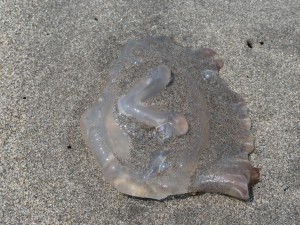 At the dock for Barra de Zacapulco, we hopped off the lancha with our gear and walked over to the structures of the ecoturismo site on the beach, which included a full-scale restaurant, swimming pool, cabañas, and palapas (covered seating areas). Our plan was to camp, which you can do for “free” if you eat the restaurant’s food. And we did enjoy some decent fare – ceviche and a plate of grilled fish. The large carafe of pineapple agua fresca was refreshing. The cabañas run around $350 MXN and are solar powered.
At the dock for Barra de Zacapulco, we hopped off the lancha with our gear and walked over to the structures of the ecoturismo site on the beach, which included a full-scale restaurant, swimming pool, cabañas, and palapas (covered seating areas). Our plan was to camp, which you can do for “free” if you eat the restaurant’s food. And we did enjoy some decent fare – ceviche and a plate of grilled fish. The large carafe of pineapple agua fresca was refreshing. The cabañas run around $350 MXN and are solar powered.
Our stay was pleasant but it was hot, hot, hot. We had high temperatures throughout the night as well. It was stifling in the tent and we didn’t sleep much. We were grateful for the swimming pool of all things the next day. Yes, there was an ocean right there to cool off in, we know it, and we did do some swimming, but the salt water was actually polluted with some floating brownish substance, and the waves were breaking right on shore. So, we decided to give the swimming pool a shot. While frankly it also wasn’t the cleanest, it kept us from overheating.
The ecoturismo complex includes a small building with showers and toilets but these were in disrepair and there was no water running to this building while we were there. Hence, we used the restaurant toilets and never showered during our stay. In general, the facilities were a bit dirty and in need of attention, and we can’t be sure if this is because we were there on a Monday and a Tuesday in late April which isn’t exactly prime time for them, or if they just don’t run a very tight ship there. The beach was deserted and while we saw a few other people dining in the restaurant, using the pool, or walking along the shoreline, the most excitement was provided by some random scientists who were zipping around on an ATV taking measurements of local vegetation.
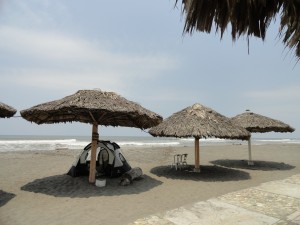 Again, this area is home to turtle conservation efforts in season, which is generally understood in this part of the country to be somewhere between June or July and November or December. While we were unfortunately unable to make our visit within this time frame, we imagine this to be a great place to participate in conservation efforts including egg collection and the escorting of turtle hatchlings to the water.
Again, this area is home to turtle conservation efforts in season, which is generally understood in this part of the country to be somewhere between June or July and November or December. While we were unfortunately unable to make our visit within this time frame, we imagine this to be a great place to participate in conservation efforts including egg collection and the escorting of turtle hatchlings to the water.
{Last Visit: April 2014}
Leave a Reply
You must be logged in to post a comment.